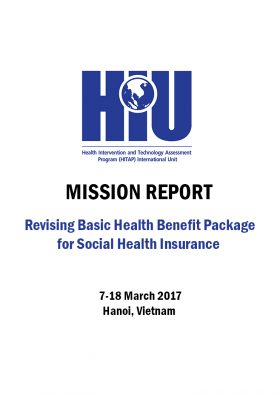This website uses cookies so that we can provide you with the best user experience possible. Cookie information is stored in your browser and performs functions such as recognising you when you return to our website and helping our team to understand which sections of the website you find most interesting and useful.
Mission Report: Revising Basic Health Benefit Package for Social Health Insurance in Vietnam

Details
The attempt to provide public health insurance in Vietnam began since before the ‘Doi Moi’, an economic reform which happened in 1986, when health care activities were all supported by the government. After the reform, the structure of government support for health care changed to partial support. Voluntary health insurance was introduced together with compulsory health insurance, introduced in 1992, for social civil servants, formal sector workers, pensioners, and people receiving social assistance. The coverage was extended to civilian employees and arm forces in 1995 when the Vietnamese Social Health Insurance (SHI) was established. Later in 2008, Vietnam officially embarked on the journey to Universal Health Coverage (UHC) with the Health Insurance Law enactment. The coverage is expected to increase to at least 70% in 2015 and 80% by 2020. At the same time, the coverage in terms of benefits covered has been continuously improved to better match population needs. Currently, the benefits package for SHI comprises of three components: medicines, medical devices and medical supplies, resulting in more than 20,000 items covered. However, since the current list was not systematically developed, with the aim to sustainably achieve UHC and also to improve the quality of health services provided to insured population, it was foreseen that the current benefit package should be revised under the concept of Basic Health Service Package (BHSP). The BHSP is expected to help prioritise and rationalise the use of health technology in the reimbursement list. The Council for Basic Health Service Package was recently established to oversee the development of the package and to make a decision on the inclusion of health interventions.




